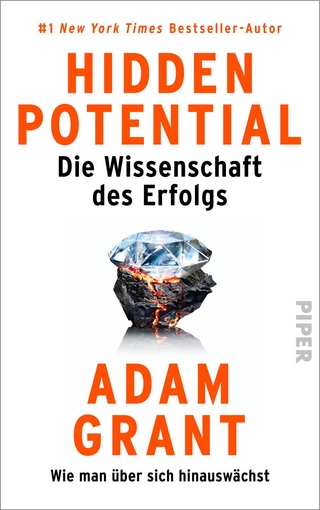
Reductionism in Art and Brain Science
Columbia University Press (Verlag)
978-0-231-17962-1 (ISBN)
- Titel z.Zt. nicht lieferbar
- Versandkostenfrei innerhalb Deutschlands
- Auch auf Rechnung
- Verfügbarkeit in der Filiale vor Ort prüfen
- Artikel merken
Are art and science separated by an unbridgeable divide? Can they find common ground? In this new book, neuroscientist Eric R. Kandel, whose remarkable scientific career and deep interest in art give him a unique perspective, demonstrates how science can inform the way we experience a work of art and seek to understand its meaning. Kandel illustrates how reductionism-the distillation of larger scientific or aesthetic concepts into smaller, more tractable components-has been used by scientists and artists alike to pursue their respective truths. He draws on his Nobel Prize-winning work revealing the neurobiological underpinnings of learning and memory in sea slugs to shed light on the complex workings of the mental processes of higher animals. In Reductionism in Art and Brain Science, Kandel shows how this radically reductionist approach, applied to the most complex puzzle of our time-the brain-has been employed by modern artists who distill their subjective world into color, form, and light.
Kandel demonstrates through bottom-up sensory and top-down cognitive functions how science can explore the complexities of human perception and help us to perceive, appreciate, and understand great works of art. At the heart of the book is an elegant elucidation of the contribution of reductionism to the evolution of modern art and its role in a monumental shift in artistic perspective. Reductionism steered the transition from figurative art to the first explorations of abstract art reflected in the works of Turner, Monet, Kandinsky, Schoenberg, and Mondrian. Kandel explains how, in the postwar era, Pollock, de Kooning, Rothko, Louis, Turrell, and Flavin used a reductionist approach to arrive at their abstract expressionism and how Katz, Warhol, Close, and Sandback built upon the advances of the New York School to reimagine figurative and minimal art. Featuring captivating drawings of the brain alongside full-color reproductions of modern art masterpieces, this book draws out the common concerns of science and art and how they illuminate each other.
Eric R. Kandel is University Professor and Kavli Professor in the Departments of Neuroscience, Biochemistry and Molecular Biophysics, and Psychiatry at Columbia University. He is director of the Kavli Institute for Brain Science and codirector of the Mortimer B. Zuckerman Mind Brain Behavior Institute at Columbia. In 2000, he was awarded the Nobel Prize in Physiology or Medicine. His recent books include The Age of Insight: The Quest to Understand the Unconscious in Art, Mind, and Brain, from Vienna 1900 to the Present (2012) and In Search of Memory: The Emergence of a New Science of Mind (2007), as well as Principles of Neural Science (2012), of which he is lead coauthor.
Part I: Two Cultures Meet in the New York School Introduction 1. The Emergence of an Abstract School of Art in New York Part II: A Reductionist Approach to Brain Science 2. The Beginning of a Scientific Approach to the Perception of Art 3. The Biology of the Beholder's Share: Visual Perception and Bottom-Up Processing in Art 4. The Biology of Learning and Memory: Top-Down Processing in Art Part III: A Reductionist Approach to Art 5. Reductionism in the Emergence of Abstract Art 6. Mondrian and the Radical Reduction of the Figurative Image 7. The New York School of Painters 8. How the Brain Processes and Perceives Abstract Images 9. From Figuration to Color Abstraction 10. Color and the Brain 11. A Focus on Light 12. A Reductionist Influence on Figuration Part IV: The Emerging Dialogue Between Abstract Art and Science 13. Why Is Reductionism Successful in Art? 14. A Return to the Two Cultures Acknowledgments Notes References Illustration Credits Index
| Erscheinungsdatum | 11.10.2016 |
|---|---|
| Zusatzinfo | 105 color images |
| Verlagsort | New York |
| Sprache | englisch |
| Maße | 152 x 229 mm |
| Themenwelt | Kunst / Musik / Theater ► Kunstgeschichte / Kunststile |
| Geisteswissenschaften ► Psychologie ► Allgemeine Psychologie | |
| Geisteswissenschaften ► Psychologie ► Biopsychologie / Neurowissenschaften | |
| Geisteswissenschaften ► Psychologie ► Verhaltenstherapie | |
| Naturwissenschaften ► Biologie ► Humanbiologie | |
| Naturwissenschaften ► Biologie ► Zoologie | |
| ISBN-10 | 0-231-17962-6 / 0231179626 |
| ISBN-13 | 978-0-231-17962-1 / 9780231179621 |
| Zustand | Neuware |
| Haben Sie eine Frage zum Produkt? |
aus dem Bereich


